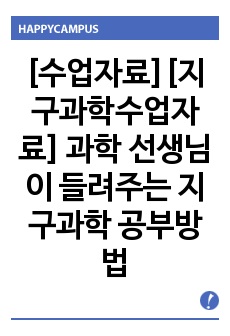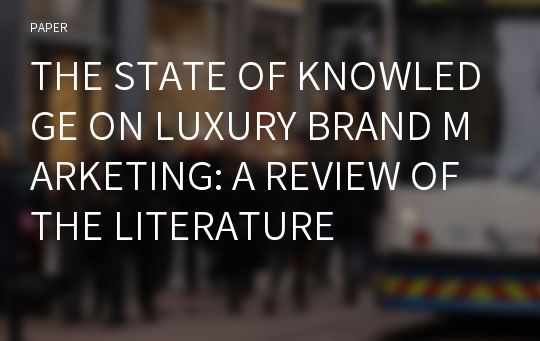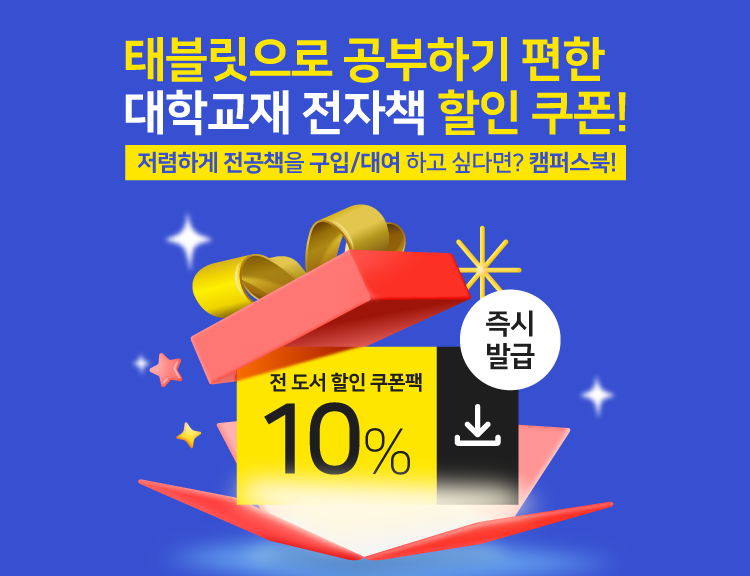THE STATE OF KNOWLEDGE ON LUXURY BRAND MARKETING: A REVIEW OF THE LITERATURE
* 본 문서는 배포용으로 복사 및 편집이 불가합니다.
서지정보
ㆍ발행기관 : 글로벌지식마케팅경영학회(GFMC)
ㆍ수록지정보 : GFMC Session1
ㆍ저자명 : Charles R. Taylor, John Costello, Eunju Ko
ㆍ저자명 : Charles R. Taylor, John Costello, Eunju Ko
영어 초록
IntroductionThe growth of the luxury goods market has seen an increased level of interest in the topic from both practitioners and academic researchers. The luxury market consists of a number of diverse categories (e.g., luxury clothing, cars, wines, jewelry, vacations) and is considerable in size, reaching €865 billion (over 1 trillion U.S. dollars) in 2014 (D’Arpizio 2014). While the topic of luxury brand marketing historically received only limited attention in the academic literature (Berthon, et al., 2009; Miller and Mills, 2012a) recent years have seen a growth of studies on the marketing of luxury products, including both goods and services). As the last half-decade has seen especially accelerated attention given to the topic, the time is right to examine the body of the overall literature on luxury brand.
With the need for consolidation of findings in mind, this paper conducts a literature review of studies of luxury branding that is designed to contribute to the literature on luxury branding in multiple ways. First, the study is designed to provide guidance for researchers on luxury brands as to the definition and measurement of a “luxury brand.” While a number of studies have attempted to define the term, no single widely accepted definition of luxury brand exists and multiple measurement schemes have been put forward. This paper will review key definitions and measurement scales in an effort to help guide future researchers. A second intended contribution is to identify the most influential theories that have been used to help understand whether/why consumer behavior towards luxury brands differs from that towards other brands. A third intended contribution is to outline major sub-areas of research on luxury brands and identify key themes in the findings within these areas in order to summarize the state of knowledge of luxury brand marketing. These areas are: 1) consumer motivation for consuming luxury brands; 2) segmentation strategies for luxury brands; 3) international considerations; and 4) the role of social media in the marketing luxury brands. In conjunction with this goal we summarize how luxury brand marketing has been found to differ from the marketing of other types of brands. In other words, we identify what principles appear to be unique to luxury brand marketing. Finally, the study is designed to contribute to the literature by identifying areas especially in need of additional research in order to move this body of literature forward.
Defining “Luxury Brand”
Unfortunately for researchers, there is not a widely accepted definition of luxury brand. For example, the American Marketing Association’s dictionary of terms does not contain a definition of “luxury,” “luxury brand,” or “luxury marketing.” Yet, several scholars have attempted to define what constitutes a luxury brand. Prior research is characterized by, “…a lack of clarity regarding a definition, operationalization, and measurement of brand luxury” (Miller and Mills 2010, p.1471). This observation is consistent with previous calls by researchers for a more precise definition of luxury goods marketing (e.g., Berthon, et al., 2009). It has further claimed that the definition and measurement of luxury has been highly subjective (Godey et al., 2009). To the extent that it is true that definitions of luxury have been subjective, this is based on what individual researchers have put forward, as opposed to luxury being an inherently subjective construct. Thus, it is possible and desirable to define what a luxury brand is and measure the degree to which a given brand is a luxury brand.
Fortunately, some researchers have made attempts to define luxury. The Miller and Mills (2012a) paper focused on fashion brands and also intentionally included several characterizations of luxury that were not designed to be formal definitions. Thus, it is not directly applicable to our purpose here, which is to identify key usable definitions of luxury brand that are generally applicable. For our purposes, a definition of a luxury brand should meet three key criteria in order to be considered viable definition. First, it should be based on a sound conceptual foundation, as is characteristic of academic definitions in general. Thus, we list here only those definitions that are logically derived from previously articulated and supported concepts. Second, the definition must be broadly applicable to luxury brands in general, and not just a subset such as only products or services, or one type of product category (e.g., fashion goods or automobiles). Finally, the theoretical definition should be capable of being operationalized in a way that allows the construct to be measured. Further, if the definition is multidimensional, it must be possible to measure all of the dimensions.
We assembled a collection of definitions that meet these criteria that is displayed in table form. The literature largely defines luxury brands based on consumer perceptions (Heine 2012, Hagtvedt and Patrick 2009), managerially determined dimensions such as marketing activities and product attributes (Keller 2009, Nueno and Quelch 1998), or a combination of both (Vigneron and Johnson 2004, Berthon et al. 2009, Tynan et. al 2010, Vickers and Renand 2003). Some dimensions are present in multiple definitions such high quality (Keller 2009, Heine 2012, Dubois et al. 2001, Tynan et. al 2001, Vigneron and Johnson 2004, Nueno and Quelch 1998) rarity (Tynan et al. 2001, Heine 2012,Vigneron and Johnson 2004, Nueno and Quelch 1998), premium pricing (Keller 2009, Tynan 2010, Heine 2012, Nueno and Quelch 1998), and a high level of aesthetics (Keller 2009, Dubois et al. 2001, Heine 2012). Though the authors of many of these definitions present some explanation of the dimensions underlying the brand luxury definition, further clarification on how these dimensions should best be measured would make any definition of brand luxury more useful. Without methods to clearly measure brand luxury there exists a cacophony of definitions, all with their own grouping of necessary dimensions that lack true clarity or empirical backing.
Measurement Scales for Brand Luxury
Essential to a better understanding of luxury brands is availability of reliable and valid scales to measure the level of luxury a brand possesses and consumer perceptions of luxury value. There are a variety of reasons why widely accepted scale(s) for measuring luxury are necessary. First, as is evident from the numerous definitions of brand luxury, there exists considerable disagreement on what makes a luxury brand; making objective measurement necessary to clarify potential inconsistencies. Another important consideration in developing scales to measure luxury stems from the reality that amongst consumers and researchers it is acknowledged that not all luxury brands are equally luxurious (Vigneron and Johnson 2004). This suggests that it may be useful to view a brand’s relative luxury as existing on a continuum opposite another construct rather than as an absolute demarcation. The schemes developed thus far are presented with particular focus on those, which are most promising.
While there is no generally accepted scale for measuring luxury, the scales that have drawn the most interest for measuring brand luxury appear to be Vigneron and Johnson’s (2004) BLI, and Dubois’ (2001) 33 item scale. Weidemann et al.’s (2009) scale also appears to warrant additional attention, while Miller and Miller and Mills’ (2012) scale appears to be promising but was designed for fashion brands only. Shukla and Purani’s(2012) effort is notable, but the real focus in on consumer motivation and not luxury.
Key Theories
Though a variety of theories are employed in the luxury marketing literature to explain the motivation for luxury consumption, a number of prominently used theories are summarized in Table 3. Though these various theories all add something slightly different to the understanding of what motivates luxury consumption, they all are largely social in nature. The oldest and perhaps most popular of these theories is conspicuous consumption which originates from Thorstein Veblen’s The Theory of the Leisure Class (1899). Veblen posits that individuals consume in a highly visible manner to signal wealth to others which infers status and power (Veblen 1899). More recently, Bearden and Eztel (1982) found that luxury goods consumed in public were more likely to be conspicuous in nature. Numerous measurement schemes have included conspicuousness as a key dimension of and motivation for consumption of luxury brands (e.g. Wiedmann 2009, Vigneron and Johnson 2004, Dubois et. al 2001).
Social comparison theory has been used in a variety of ways to explain different types of luxury consumption motivation. For example, Wiedmann et al. (2009) proposes that since social comparison theory predicts that people tend to conform to majority opinion of their membership groups, that consumers may likely use a luxury brand to conform to social standards. Mandel and Cialindi(2006) find that social comparisons impact not only one’s feelings of self-satisfaction, but also preference for luxury brands. Researchers have also used social comparison theory as a way to understand how consumers engage in comparison between themselves and mass media outlets, Kamal et al. (2013) use this theory in the context of social media marketing and luxury goods.
Self-concept theory is another lens scholars have used to examine luxury consumption. Self-concept comprises of how a person feels about his or herself (Gil et al. 2012) making one’s self-concept a potential motivator for luxury consumption. Luxury brands can appeal to self-concept by making consumers feel good about themselves through possession or gift giving (Shukla and Purani 2010). Recent findings have also suggested that one’s self-concept orientation can have an effect on preference for certain types luxury consumption. Kastakankis and Balabanis (2012) find that consumers with an interdependent self-concept are associated with bandwagon luxury consumption while an independent self-concept discourages this type of behavior.
Consumer culture theory in general (see Arnould and Thompson 2005) and Belk’s (1988) concept of the extended-self in particular, have informed how many researchers understand luxury consumption motivation. The extended-self helps to explain the symbolic role luxury possessions have in the consumers’ lives (Han, Nunes, and Dreze 2010). Consumers use possessions to form and alter their identities in order to fit their projections of who they are and hope to be (Belk 1988). Value in the possession and consumption of luxury brands is held in the ability to extend one’s self (Hung et al. 2011). Extended-self also serves as one of the five factors in Vigneron and Johnson’s (2004) BLI scale and includes the items of leading, very powerful, rewarding, and successful to measure this factor.
While some have argued that a characteristic of luxury brands is their uniqueness (e.g. Dubois et al. 2001), others have also suggested that an individual’s desire to be seen as unique is another important motivation for luxury consumption. Underlying this assertion is Snyder and Fromkin’s (1977) theory of uniqueness, which proposes that individuals develop the need to differentiate themselves from others when there is too much similarity in their social environment. Tian, Bearden, and Hunter’s (2001) concept of consumer’s need for uniqueness is derived from the theory of uniqueness. Consumer’s need for uniqueness suggests that consumers pursue differentness relative to others through the consumption of goods with the intention of developing and enhancing one’s self and social image (Tian et al. 2001). Luxury goods inherent scarcity due to high price and restricted distribution makes it an especially strong category for those attempting to display uniqueness to others (Bian and Forsythe 2012)
Motivations and Reasons for Consuming Luxury Goods
A consistent theme in the luxury goods marketing literature is that the motives for buying luxury brands differ from those of other types of brands. Numerous studies have explored a variety of potential motives for luxury brand consumption and findings consistently confirm that unique factors contribute to the consumption of luxury brands.
At the broadest level, it has been found that luxury brands are attractive to consumers for multiple reasons. Central to the appeal of luxury brands are symbolic meanings consumers attach to them as opposed to specific product features (Han et al., 2010; Kastakanis and Balabanis 2012). More so than standard brands, luxury brands attempt to leverage the meanings consumers attach to them in order to increase sales. The motives underlying the attachment of meanings to luxury brands are a key to understanding why consumers purchase luxury brands.
A summary of key articles aimed at exploring motivations for luxury consumption is provided in this section. Clearly, motives for purchasing luxury brands is drawing research interest and is in need of additional research. One longstanding factor that consistently comes up is the importance of social influence and comparisons to others as well as a desire to project a certain image to others due to status consciousness. The role of hedonic pleasure through the consumption of luxury goods has also been a point of emphasis in several studies. More recently, some studies focusing on promising additional factors, including luxury brand consumption as an expression of personal values and as a result of pride, or expressing self-confidence have produced key findings. It is also clear that some variation in motives for purchasing luxury brands has been found, such as differences between product categories, by gender, and culture, and that need more research in these areas.
International/ Cross-Cultural Considerations
A sub-topic that has been investigated by several researchers is whether international and cross-cultural factors have an impact on luxury brand marketers. It has been well documented that many luxury goods marketers have been successful in selling their products to high income/ high-status consumers around the world. As the market for luxury goods continues to grow consumer demand in Western developed markets have stalled in the face of recessionary trends while the appetite for luxury goods has grown in emerging economies such as China, India, Brazil, and Russia (Shukla and Purani 2012).
After reviewing the literature in this area it seems that to date, the studies done on cross-cultural issues in luxury brand marketing appear to raise more questions than they solve. On one hand, it is clear that luxury brands have grown in many parts of the world, resulting in interest in whether there are significant cultural factors independent of income that drive to own luxury goods. On the other, some studies appear to show individualism vs. collectivism matters to consumers while others are suggestive of similar motives across countries. As a result, it is very much worthwhile for more studies attempting to uncover nuances as to the circumstances under which collectivism makes a difference. Moreover, additional study of factors that may vary across culture, such as the influence of country of origin, value consciousness and susceptibility to interpersonal influence as well as other cultural factors should be considered going forward.
Market Segmentation for Luxury Brands
The extant research on segmentation in luxury brand markets suggests that there are strong possibilities for cross-market segmentation. The findings of Ko et al. (2007,2012) and Wiedmann et al. (2009) are notable examples of such possibilities. However, it must be noted that the research conducted to data primarily focused on markets at high levels of economic development, so further research on the circumstances under which markets can be segmented cross-nationally. It is also notable that much of the research on this issue has been conducted on female subjects, and in light of the Stokberger-Sauer and Teichman (2013) findings of gender differences in Germany, more research is needed on this topic.
Effective Use of Social Media for Luxury Brands
Research related to social media marketing and luxury brands is reviewed and underlying themes are presented. Because of the evolving nature of social media promotion and the limited number of studies, it is difficult to draw sweeping conclusions from the literature. However, it is clear that social media can be used to build brand image and enhance purchase intention if done properly. Moreover, Kim and Ko’s (2010 and 2012) study provides a promising framework for better understanding the impact of social media programs on various outcome measures.
Conclusion and Suggestions for Future Research
Recent growth in the study of the luxury market has produced a body of literature that has addressed a number of important issues related to the subject. This literature highlights how the marketing of luxury brands is different than other products while raising even more questions. Future research suggestions on all the topics included are presented based on the findings and themes in the literature review.
참고 자료
없음"GFMC Session1"의 다른 논문
 FAST AND SLOW FASHION BRANDS IN DEVELOPING SUSTAINABLE ..6페이지
FAST AND SLOW FASHION BRANDS IN DEVELOPING SUSTAINABLE ..6페이지 “WHAT IF A CELEBRITY AND A BRAND CO-CREATE A NEW COLLEC..7페이지
“WHAT IF A CELEBRITY AND A BRAND CO-CREATE A NEW COLLEC..7페이지 THE INSTAGRAM’S STRATEGY IN ENGAGING THE CUSTOMER’S LOY..3페이지
THE INSTAGRAM’S STRATEGY IN ENGAGING THE CUSTOMER’S LOY..3페이지 THE PARTICULARITIES OF NEW PRODUCT DEVELOPMENT IN THE T..5페이지
THE PARTICULARITIES OF NEW PRODUCT DEVELOPMENT IN THE T..5페이지 THE LONE CHOCOLATE BAR: THE INFLUENCE OF PERCEIVED SCAR..6페이지
THE LONE CHOCOLATE BAR: THE INFLUENCE OF PERCEIVED SCAR..6페이지 ADS AS WORKS OF ART: MEASURING ADVERTISING IMMERSION3페이지
ADS AS WORKS OF ART: MEASURING ADVERTISING IMMERSION3페이지 ECONOMIES OF SMALL: NICHE STRATEGIES AND SUCCESS FACTOR..8페이지
ECONOMIES OF SMALL: NICHE STRATEGIES AND SUCCESS FACTOR..8페이지 THE INFLUENCE OF ONLINE CUSTOMER REVIEWS ON RETAILERS' ..6페이지
THE INFLUENCE OF ONLINE CUSTOMER REVIEWS ON RETAILERS' ..6페이지 IS THE ARTIFICATION PROCESS PERCEIVED BY FINAL CONSUMER..6페이지
IS THE ARTIFICATION PROCESS PERCEIVED BY FINAL CONSUMER..6페이지 THE ODD EVEN PRICE PARADOX IN THE FASHION LUXURY SECTOR6페이지
THE ODD EVEN PRICE PARADOX IN THE FASHION LUXURY SECTOR6페이지



























